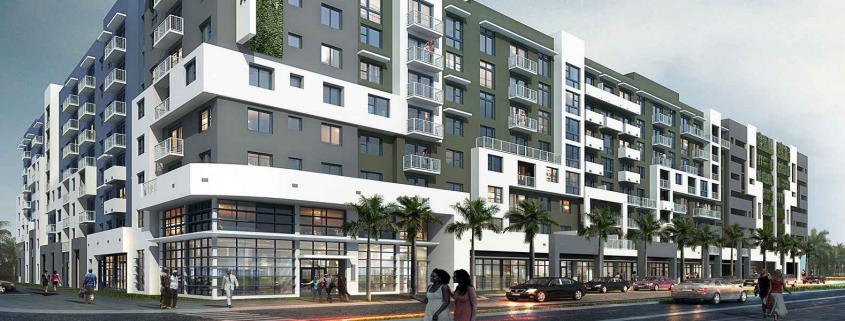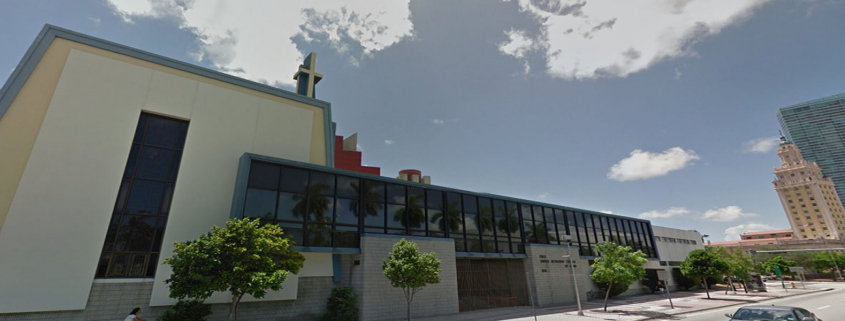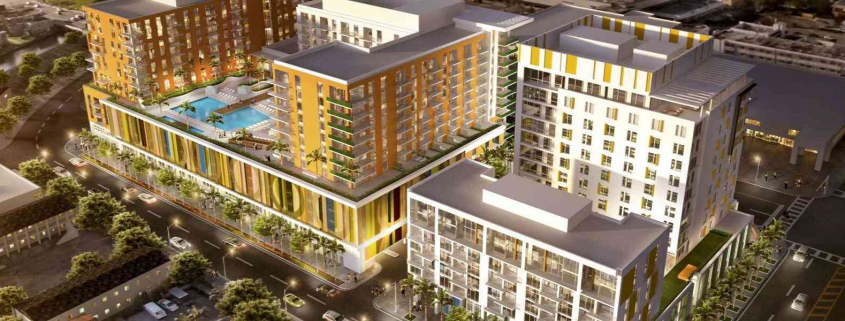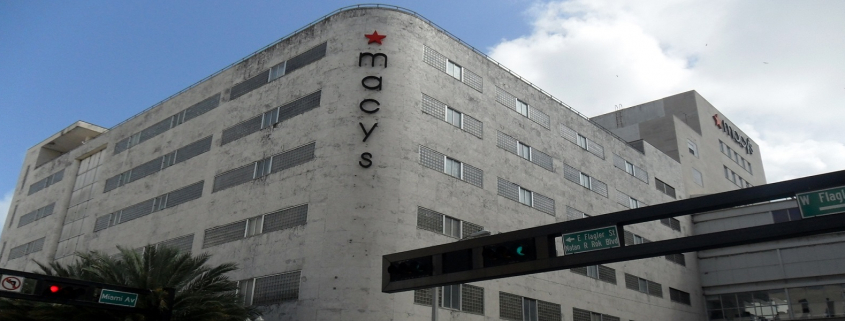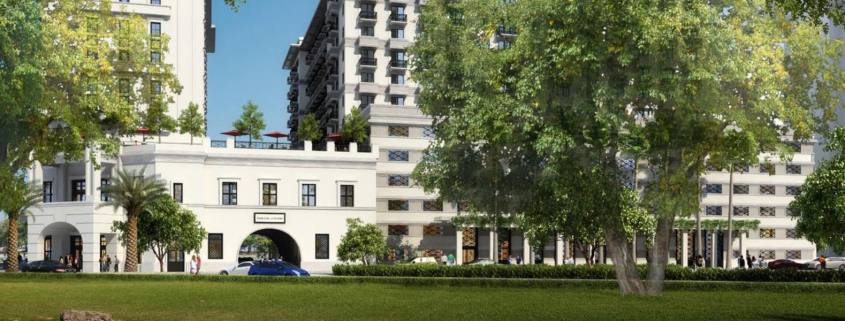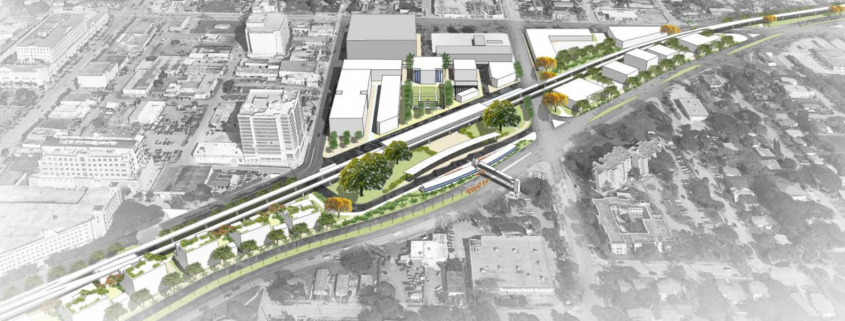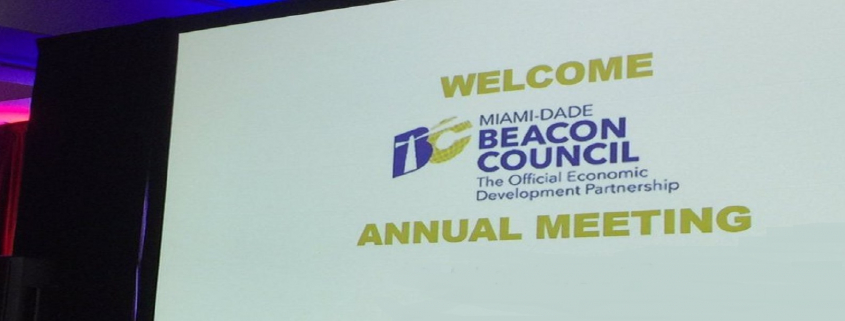Developer EDEN Multifamily topped off construction of NOMA, an eight-story, 347-unit apartment building at 2145 Northeast 164th Street in the heart of North Miami Beach.
Scheduled to be completed in fall 2018, NOMA is EDEN’s first development in North Miami Beach and represents a significant milestone for the city, which is experiencing a renaissance following the 2015 completion of the City’s Mixed Use Town Center zoning district. The multifamily project is located in the emerging Community Redevelopment Area on the east side of the city.
EDEN and Coastal Construction, the project’s general contractor, are set to host a topping off celebration at the project site on February 2 at noon. City of North Miami Beach commissioners, city officials and other invited guests will be on hand to tour the project and enjoy the festivities.
“We are finding a strong demand from renters for boutique apartment buildings in urban areas—or the downtown areas of suburban markets—as an alternative to the high-rise towers that dominate these areas,” EDEN Multifamily president Jay Jacobson tells GlobeSt.com. “These renters are seeing that you can find value and convenience at new boutique buildings without sacrificing the level of amenities. The challenge for multifamily developers is to identify areas where this type of product can be delivered on a cost-effective basis.”
NOMA includes studio, one-, two- and three-bedroom apartments, an eight-story parking garage and ground-floor retail space. Building amenities include an inner courtyard with a heated pool, an elevated sundeck seating area with a firepit, community rooms, a state-of-the-art fitness center with a yoga/spin room and a dog walk and grooming area.
EDEN will enhance the public greenspace along the Snake Creek Canal with extensive landscaping, public seating, a walking path/bikeway and a significant public art installation. The multifamily property offers common area Wi-Fi and large community gathering spaces.
Coastal Construction is the general contractor. MSA Architects is the NOMA architect, with Bruce Howard and Associates providing landscape architecture and ID& Design Internationalas the interior designer.
Source: GlobeSt.

